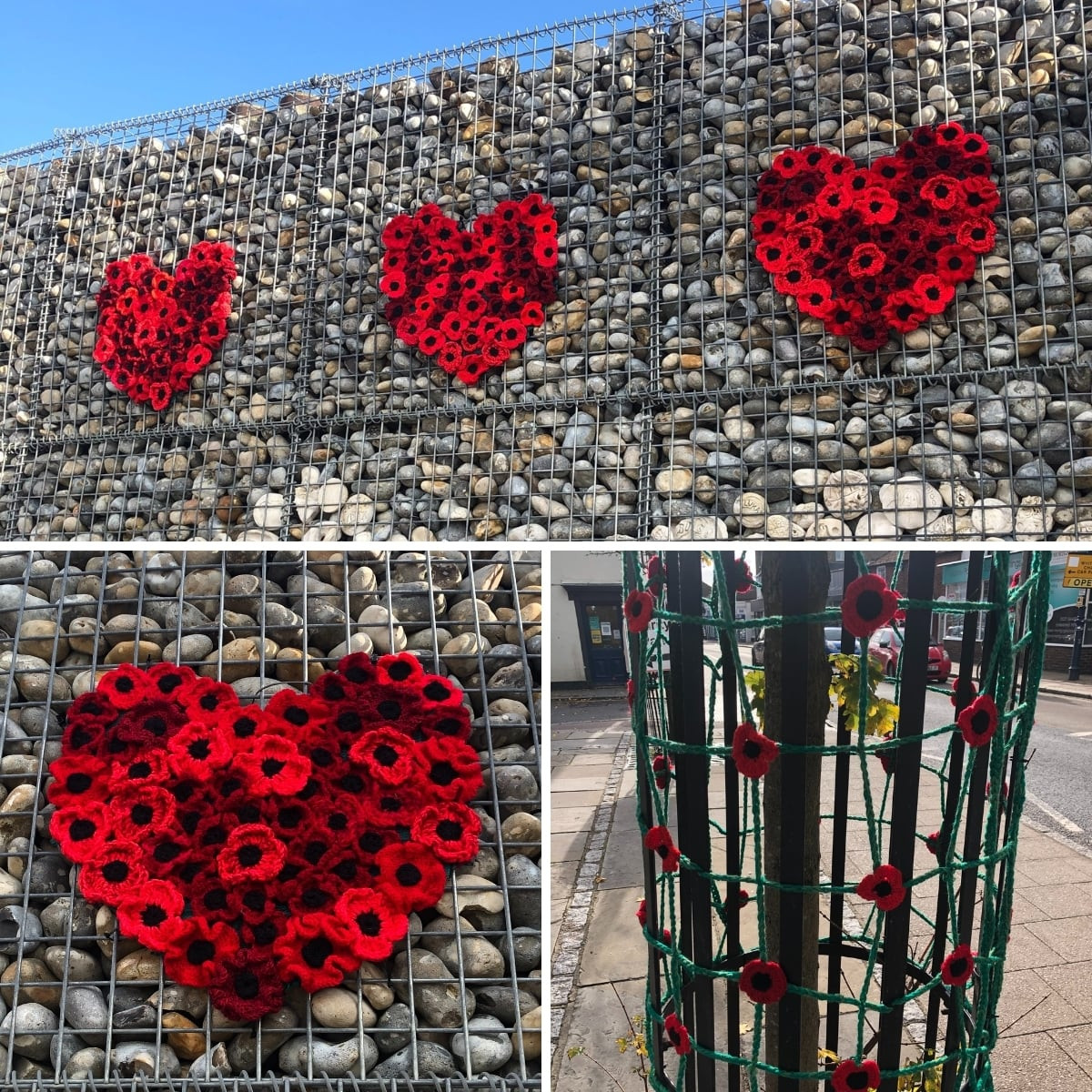

Moina considered that a replacement emblem, the red poppy, could be used to fill those empty spaces as a symbolic reminder of those who had not returned home to celebrate the end of the war. She realized that after the war the numerous signs related to the war – the Red Cross, War Loan insignia, Service Flags – which had been evident all over the United States during its involvement in the war – would gradually be removed. She wanted to act swiftly so that this new national emblem might be already be produced in the form of pins, on postcards and so on in time for the signing of the peace treaty at Versailles in June 1919. In the letter she asked him to put the idea to the War Department, which he immediately did. She began a tireless campaign at her own expense, starting with a letter to her congressman in December 1918. She was encouraged by a positive reaction to the idea by the press.

Moina Michael was determined to put all her energy towards getting the Poppy emblem adopted in the United States as a national memorial symbol. Since this group had given her the money with which to buy them, she considered that she made the first sale of the Flanders Fields Memorial Poppy on 9th November 1918.Ĭampaign for the Poppy as a National Memorial Symbol Keeping one poppy for her coat collar she gave out the rest of the poppies to the enthusiastic delegates.Īccording to Moina, this was the first group-effort asking for poppies to wear in memory of “all who died in Flanders Fields”. When she returned to duty at the YMCA Headquarters later that evening the delegates from the Conference crowded round her asking for poppies to wear. The delegates took both poems back into the Conference.Īfter searching the shops for some time that day Moina found one large and twenty-four small artificial red silk poppies in Wanamaker’s department store. She showed them the illustration for John McCrae’s poem “In Flanders Fields” in the Ladies Home Journal, together with her response to it “We Shall Keep the Faith”.

She was touched by the gesture and replied that she would buy twenty-five red poppies with the money. On behalf of the delegates they asked her to accept a cheque for 10 dollars, in appreciation of the effort she had made to brighten up the place with flowers at her own expense. Three men attending the conference then arrived at Moina’s desk. She titled her poem “We Shall Keep the Faith”. It would become an emblem for “keeping the faith with all who died”.Ĭompelled to make a note of this pledge she scribbled down a response on the back of a used envelope. She vowed always to wear a red poppy of Flanders Fields as a sign of remembrance. She felt as though she was actually being called in person by the voices which had been silenced by death.Īt that moment Moina made a personal pledge to “keep the faith”. In her autobiography, entitled “The Miracle Flower”, Moina describes this experience as deeply spiritual. Moina had come across the poem before, but reading it on this occasion she found herself transfixed by the last verse: Lieutenant-Colonel John McCrae had died of pneumonia several months earlier on 28th January 1918.
_05.jpg)
This was an alternative name sometimes used for John McCrae’s poem, which was also called “In Flanders Fields”. In it she came across a page which carried a vivid colour illustration with the poem entitled “We Shall Not Sleep”. During the first part of the morning as a young soldier passed by Moina’s desk he left a copy of the latest November edition of the “Ladies Home Journal” on the desk.Īt about 10.30am Moina found a few moments to herself and browsed through the magazine. The Twenty-fifth Conference of the Overseas YMCA War Secretaries was in progress at the headquarters. On that day Hamilton Hall and the “Gemot” was busy with people coming and going. servicemen would often gather with friends and family to say their goodbyes before they went on overseas service. This was a reading room and a place where U.S. She was working in the “Gemot” in Hamilton Hall. Moina Belle Michael was on duty at the YMCA Overseas War Secretaries’ headquarters in New York. It was on a Saturday morning, 9th November 1918, two days before the Armistice was declared at 11 o’clock on 11th November. The origin of the red Flanders poppy as a modern-day symbol of Remembrance was the inspiration of an American woman, Miss Moina Michael.


 0 kommentar(er)
0 kommentar(er)
